So, I got my hands on a the N-scale Kato Big Boy recently, admittedly more of a display piece given my emphasis has been on Japanese rolling stock. That said, it is a fairly impressive piece of work.
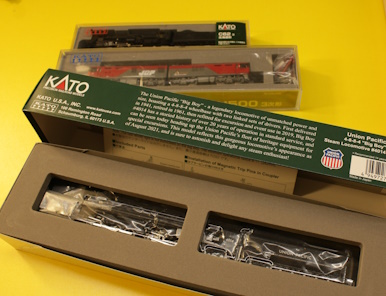 |
| Comes in a cardboard box as opposed to the styrene case my other Kato locos come in |
My first impression (pre-unboxing) was a little bit of a surprise: Much of my single-unit Japanese rolling stock comes neatly in clear plastic containers (which I confess I find convenient for storage, helping keep the dust and other badness away) whereas this unit was enclosed in a cardboard box. I don’t know if this is a cost-cutting measure (the model is quite long, after all) or a nod to environmental concerns. Or maybe even they’re expecting the box to be discarded, the unit’s new home being permanently on your right-of-way. But whatever the reason, I’m sure I’ll get over it.
| Note: this unit was bought with my own money. This is not sponsored by Kato or any other entity. Opinions stated here are exclusively my own. |
As big as the 4-8-8-4This is the Whyte notation used in the US; overseas readers may be more familiar with the UIC notation, which I believe would describe the Big Boy as (2'D)D2' is at twelve-inch-to-the-foot, here at 160-to-1 it is much smallerNo duh! This should come as no surprise, really.
But given how long and slender it is, it just feels so tiny ... until you set it into a scale-appropriate context... something I try to do in the photos., but very handsomely detailed. It does take two hands to move around, and with a dozen axles on the locomotive alone (never mind the seven on the tender) it is a beast to settle on the rails, needing clever manipulation of the rerailers to get everything right.
The model reflects the prototype as it is restored for show in the 21st century, which means it’s an oil-burner. If you’re looking to model the war-era machine, you’ll need to convert it to coal again. What’s involved there is beyond the scope of this review, though. I’m fine with the way this miniature monster looks today.
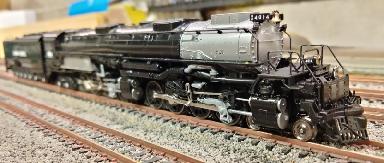 |
| 4014 sitting in my staging yard, and a good look at the detail |
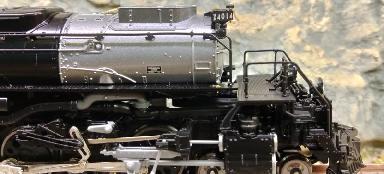 |
Even depicted in N scale, the model is rich on detail. Rivet detail is clear and doesn’t seem to be overtly out-of-scale; the hand rails are adequately lacy, too. The running boards and front deck are clearly textured. Looking at the photographs it’s easy to forget you’re looking at so tiny a model. The running gear moves nicely, though the fresh out of the box sheen can use some toning down with weathering, especially if you’re looking to get that mid-century work-horse this originally was.
Operationally, the Kato model does not disappoint. Straight out of the box the unit runs smoothly, suffering only from a bit of gear-box growl. It’s not clear to me that this will go away or if it needs some breaking in, but I confess I’m used to the Japanese equipment having that silky silent operation from the get-go; the noisiest thing there is the clatter of wheels negotiating frogs, or the collective whoosh of all those wheelsets over the track.
Each set of 8 drivers articulates separately, and each is driven by its own coreless motor. Each is seemingly also powered separately: driving the locomotive into an unpowered block in my staging yard, I noticed that the forward set of drivers stopped as they left the powered block (I run DC) while the rear set continued to push the locomotive forward.
The literature boasts the ability to negotiate 11" turn radius, but when I put it to the test on a “standard” T-TRAK corner module, the thing unceremoniously derailed on the 282mm (11 inch) inner curve. I do want to retestsee below this, but it seems to be precariously close to the limits here anyway (it could just be fussy on less-than-ideal trackwork). On the other hand, it had no problems negotiating the 315mm (12⅜ inch) outer track, even if it looked really toy-like. Naturally, the thing looks really quite handsome leaning into the larger curve of my double-size T-TRAK curve.
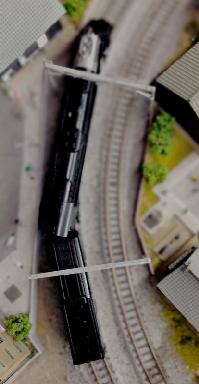 | 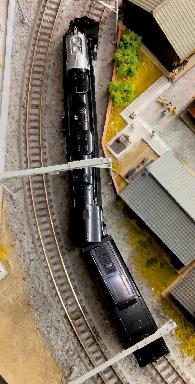 |
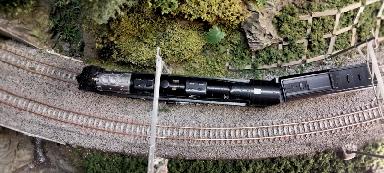 | |
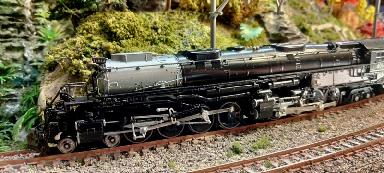 | |
To its credit, it had no problems negotiating the tight #4 switches in my staging yard (even as it looked odd doing so) and this includes some unfortunate S-curves that track plan has. I suppose this isn’t too much of a surprise, given that #4 switches have an effective 481mm (19") radius. Kato’s #6 switches would no doubt be more graceful, but I don’t have anything using them at the moment, so not tested.
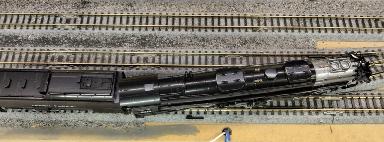 |
Overall, this is a nice locomotive: Kato’s attention to quality really shows, though I’ll leave it to the rivet-counters to weigh in on the overall attention to detail this model received. I mean, I don’t pretend to be an expert here in terms of N-scale US rolling stock and the concessions one makes there. I’d have to pull out an HO-scale AC-12 to get a sense of what might have needed compromise here, but overall, this locomotive does not disappoint ... at least this casual modeler.



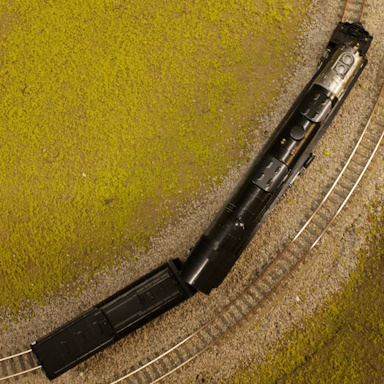
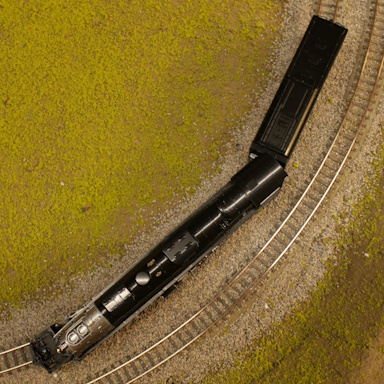

 Generate a QR code link to this page
Generate a QR code link to this page